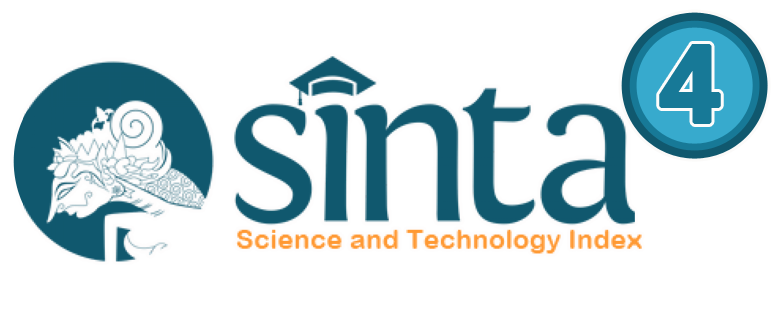Perancangan Aplikasi SPK Penerimaaan Tenaga Kerja Honorer dengan Menggunakan Metode MAUT
Keywords:
Dinas Perkebunan, Tenaga kerja honorer, sistem pendukung keputusan, MAUTAbstract
The Plantation Service is the implementing element of the Provincial Government, led by a Head of Service, located under and responsible to the Regional Head through the Regional Secretary. The Plantation Service has the task of carrying out the authority of the Provincial Government and the task of Deconcentration in the plantation sector. According to Government Regulation No. 48 of 2005 as amended by Government Regulation No. 56 of 2012, an honorary employee is someone who is appointed by a staffing officer in a government agency to carry out certain tasks. Planning for the needs of honorary workers is part of the activities of preparing a recruitment program to select and obtain qualified workers in an agency. However, in the recruitment process for honorary workers at the North Sumatra Plantation Service, too many applicants and application files as well as the lengthy selection stages make it difficult for an agency to find new honorary workers, as desired. Therefore, the role of a decision support system is needed in overcoming the problems faced today. Therefore, to determine prospective honorary workers, a decision support system is needed to facilitate work and avoid errors in calculating system data quickly and more accurately by using the Multi Attribute Utility Theory (MAUT) method. From the results of this study, the MAUT method produced the best preference value of 0.493 on behalf of Sarah, S.E as the first rankReferences
K. Safitri and F. Tinus Waruwu, “SISTEM PENDUKUNG KEPUTUSAN PEMILIHAN KARYAWAN BERPRESTASI DENGAN MENGGUNAKAN METODE ANALYTICAL HIEARARCHY PROCESS (Studi Kasus: PT. Capella Dinamik Nusantara Takengon),” vol. 1, no. 1, pp. 12–16, 2017.
Y. Yohanes and A. Hajjah, “Sistem Penunjang Keputusan Rekomendasi Tenaga Kerja Menggunakan Metode Multi Factor Evaluation Process (Studi Kasus: STIKOM Pelita Indonesia),” Jurnal Mahasiswa Aplikasi Teknologi Komputer dan Informasi, vol. 1, no. 2, pp. 110–114, 2019.
N. Sudarsono, T. Nuraen, and S. Rahmawati, “Sistem Penunjang Keputusan Pemberian Bantuan Siswa Miskin di SD Negeri Sukamenak Kota Tasikmalaya Menggunakan Metode Technique for Order Preference by Similarity to Ideal Solution (TOPSIS),” Seminar Nasional Teknologi Informasi Dan Multimedia, vol. 4, no. 1, pp. 163–168, 2016.
H. Asnal and F. Zoromi, “Penerapan Metode Multi Atribut Utility Theory Dalam Sistem Seleksi Penerimaan Dosen Di Stmik-Amik-Riau.,” Rabit: Jurnal Teknologi dan Sistem Informasi Univrab, vol. 5, no. 1, pp. 44–53, 2020, doi: 10.36341/rabit. v5i1.1065.
R. N. Sari and R. S. Hayati, “Penerapan Metode Multi Attribute Utility Theory (MAUT) Dalam Pemilihan Rumah Kost,” J-SAKTI (Jurnal Sains Komputer dan Informatika), vol. 3, no. 2, p. 243, 2019, doi: 10.30645/j-sakti. v3i2.144.
R. Jannah, “Aplikasi Penerimaan Karyawan dengan Metode Multi Attribute Utility Theory Riadhil Jannah”.
M. Hidayat, P. A. Jusia, and Amroni, “Analisa dan Perancangan Sistem Pendukung Keputusan Untuk Penerimaan Karyawan PT. Dos Ni Roha Jambi Menggunakan Metode Multi Attribute Utility Theory (MAUT),” Jurnal Processor, vol. 13, no. 1, 2018.
E. Satria, N. Atina, M. E. Simbolon, and A. P. Windarto, “Spk: Algoritma Multi-Attribute Utility Theory (Maut) Pada Destinasi Tujuan Wisata Lokal Di Kota Sidamanik,” Computer Engineering, Science and System Journal, vol. 3, no. 2, p. 168, 2018, doi: 10.24114/cess. v3i2.9954.
D. K. P, E. N. Hamdana, and D. D. Fahreza, “Sistem Pendukung Keputusan Prioritas Calon Penerima Program Indonesia Pintar Pada Siswa Sekolah Menengah Pertama Menggunakan Metode Topsis,” Jurnal Informatika Polinema, vol. 4, no. 2, p. 101, 2018, doi: 10.33795/jip. v4i2.153.
T. Rosmaria Sitompul and N. Astuti Hasibuan, “SISTEM PENDUKUNG KEPUTUSAN SELEKSI TENAGA KERJA UNTUK SECURITY SERVICE MENGGUNAKAN METODE ARAS,” vol. 2, no. 1, 2018, [Online]. Available: http://ejurnal.stmik-budidarma.ac.id/index.php/mib|
N. Fajri and Z. Abidin, “Kebijakan Pemerintah Aceh Singkil Terhadap Pengangkatan Tenaga Kerja Honorer Kategori II Menjadi Pegawai Negeri Sipil.” [Online]. Available: www.jim.unsyiah.ac.id/FISIP
S. R. Cholil and T. Ardianita, “Utilization of AHP-MAUT Method to Determine the Country of Exhibition Abroad in Batik Hatta Boutique,” vol. 02, pp. 52–56, 2021.
R. Khalida, B. Bangun, and N. Oktari, “Penerapan Metode ROC dan Weighted Aggregated Sum Product Assesment (WASPAS) dalam Penerimaan Asisten Perkebunan,” vol. 5, pp. 937–944, 2021, doi: 10.30865/mib.v5i3.3092.
S. Damanik and D. P. Utomo, “Implementasi Metode ROC (Rank Order Centroid) Dan Waspas Dalam Sistem Pendukung Keputusan Pemilihan Kerjasama Vendor,” … Teknologi Informasi dan …, vol. 4, pp. 242–248, 2020, doi: 10.30865/komik. v4i1.2690.
R. Kharisman Ndruru, “Penerapan Metode Additive Ratio Assessment (ARAS) dan Rank Order Centroid (ROC) Dalam Pemilihan Jaksa Terbaik Pada Kejaksaan Negeri Medan,” Seminar Nasional Teknologi Komputer & Sains (SAINTEKS), pp. 367–372, 2020.
Downloads
Published
How to Cite
Issue
Section
License
Copyright (c) 2023 Kirana Dwi Putri, Angga Putra Juledi, Ibnu Rasyid Munthe

This work is licensed under a Creative Commons Attribution 4.0 International License.















